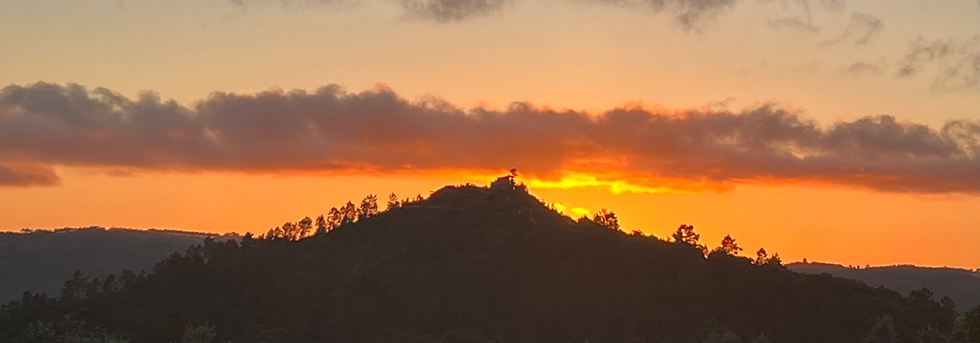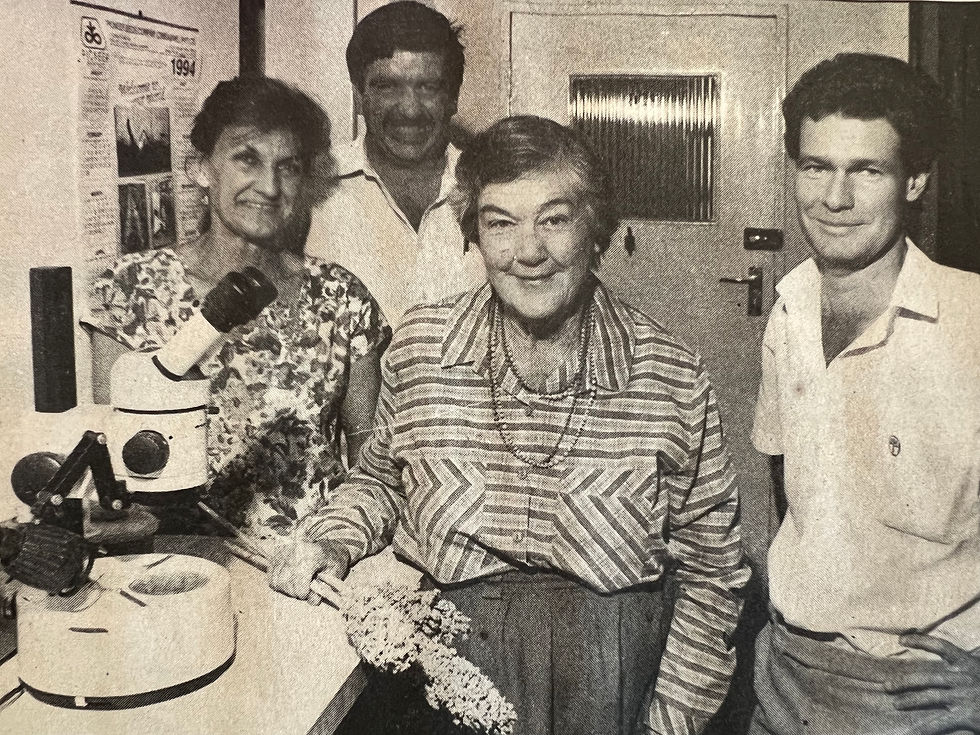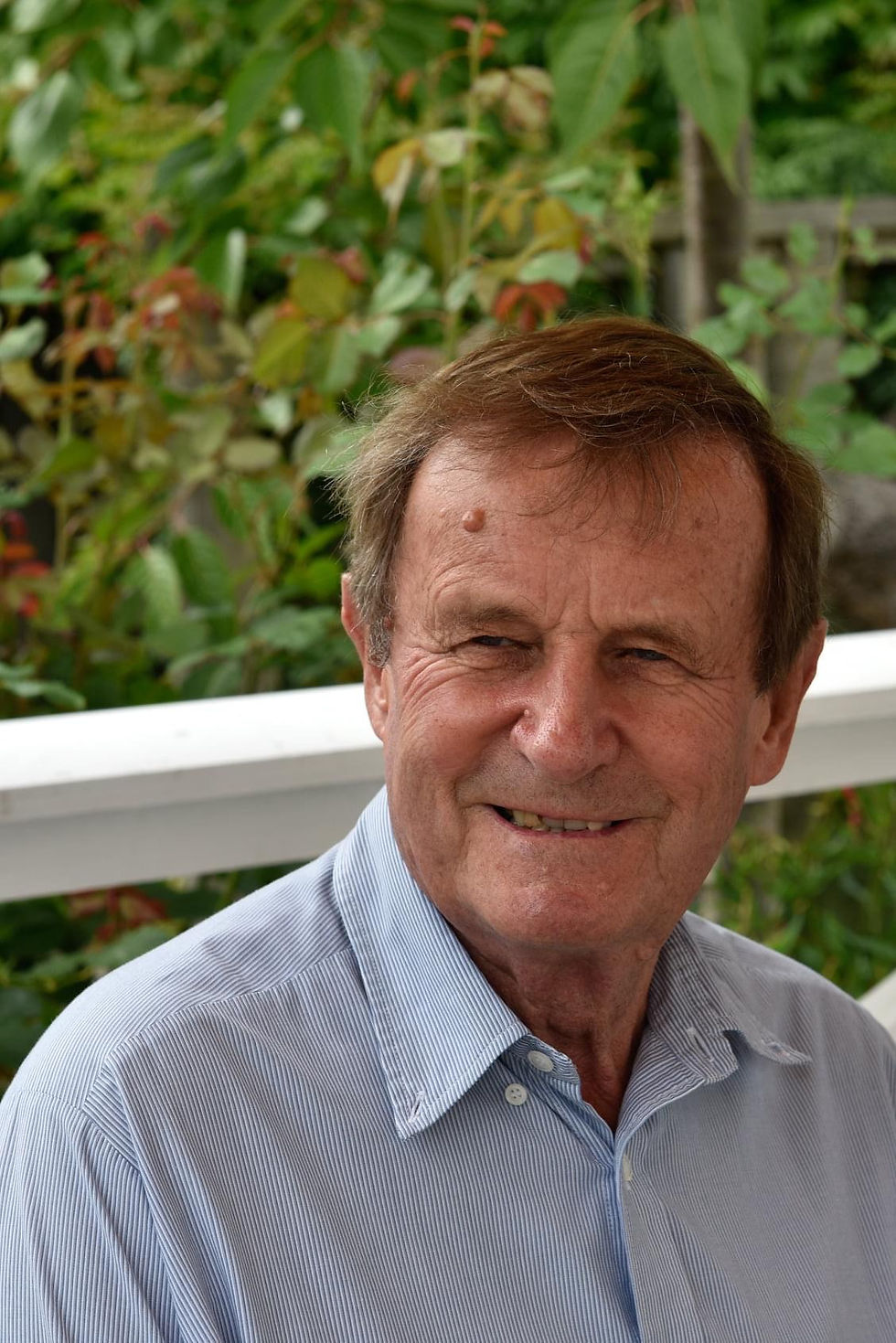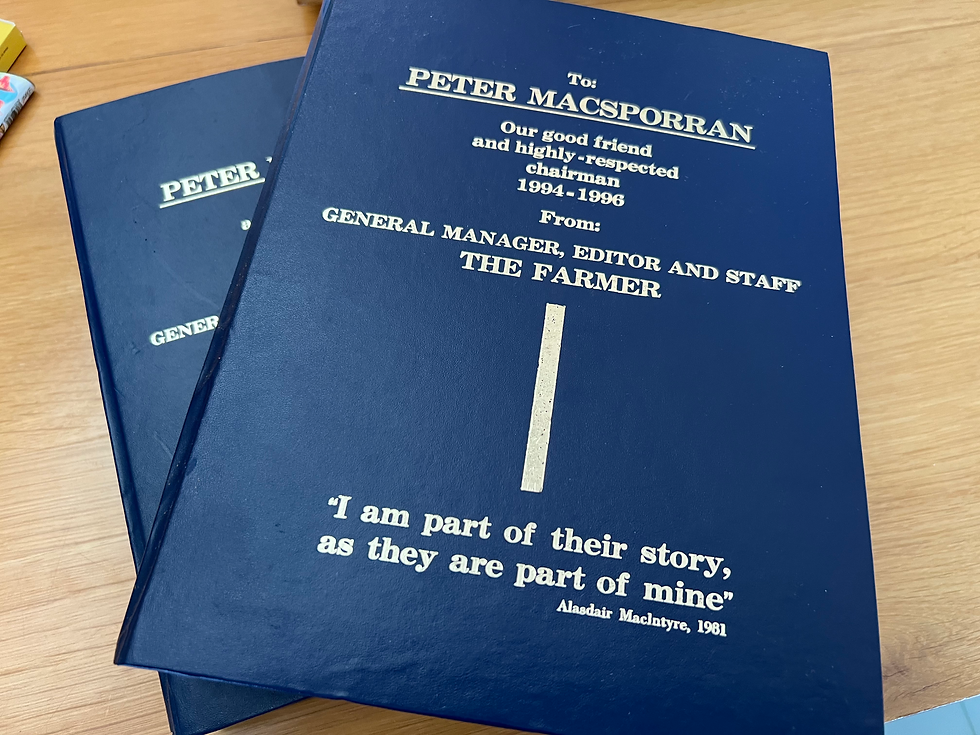
I only had a visit to the local clinic this week for a dressing change, and hopefully, next week, I will have a free week before revisiting the hospital to treat my troublesome eye. Last week my consultation with my stomach surgeon ended up with him making an incision in my stomach to remove clotted blood from the large haematoma I have there. Easily done, with means of a scalpel to make an opening big enough coupled with the combined pressure of the nurse and him in squeezing the old blood and glaur from my stomach. This was done under local anaesthetic and was painless.
“When you decide to cut down the last mahogany tree because someone else will. You are lost and the point is we all must care.” - Gary Warth on the Compensation Awareness site in Telegram this week.
I quote this as written by Glary as I have encountered so many similar synopses as an excuse for wrongs done in business and politics or just plain short-sightedness in regard to the destruction of the environment. I had a neighbour when asked why he had shot that large kudu bull we often saw crossing our farm road or some other antelope in our area. The answer was always, “I did it before someone else did or worse still, someone might snare it, causing a slow death.” He seemed to think this excused his actions although up until then, the animal had dodged both the snare and the bullet for a number of years.
“I did it before someone else did is not a mitigating reason for taking an action detrimental to another party or the environment.” - Peter McSporran
The worst-case example of such thinking was during the Fast Track Land Resettlement Program (FTLRP), where not only politicians and senior civil servants jumped on the gravy train of acquiring land but also many business leaders who clearly understood the damage the exercise was doing to the long term well being of the country. Many of my acquaintances holding senior positions in banks and corporations voiced their shock at the commencement of the program and the fact that the politicians were the first at the trough for them only to join the land feeding frenzy in less than a year. Yes, saying if I do not do it someone else will, so why lose out? Never mind it may have been an associate, business acquaintance, or even a client who was losing the land. All of them, due to their lack of agricultural knowledge, were bound to fail. For some reason, even people I thought of as being sensible, thought that to make money you just had to have land. Certainly, the agricultural skill was not prominent in any of the CVs of those applying for and getting the land and before long, they realised money did not grow on trees, but instead, land had an insatiable appetite in eroding a layman's wealth.
“Land if farmed without the required agricultural knowledge soon changes from an asset to a liability as has been proven in Zimbabwe. Unfortunately, those new farmers that have gone into JVs with the thieves, have prolonged the illegal benefactors short-term tenure but does not resolve the long-term reinstatement of that land as an asset both to the owner and the country.” - Peter McSporran
Funnily enough, I have had the same answer from some of the new farmers involved in these harmful JVs, using the same excuse for their presence on someone else's land.
By mid-1994, I was readying myself to take over as president of the Commercial Farmers Union (CFU). Over the years, the move from VP to president was usually uncontested, with the transition being peaceful. As for the VP’s position, a number of names were coming up. The council tried to rotate the position between commodities and branches every two years, but that year, the front runner from the commodities, Selby Chance, Chairman of the Cattle Producers Association, was being challenged by Phil Brink, SW Mashonaland Branch and Nick Swanepoel, Makonde Branch, the person I had stood against two years before. I had been neither branch nor commodity. In fact, I was not even on the CFU council at the time of my election. I was just a farmer, although I had been chairman of the Commercial Oilseeds Producers Association (COPA) in the late eighties. Of interest, just last week I got a text from COPA's longstanding chief executive from my time there, George Hutcheson. It was good for the union that the position of VP was not a fait accompli, ensuring each contender for the position was scrutinised concerning his ability and standing in the farming community in finally meeting council approval and election.
Mentioning George Hutcheson reminds me of two recruitments I had done when chairman of Oilseeds. The first, and at that time only as a consultant, was Dr Clive Levy, a specialist on oilseed diseases, and then Richard Amyot, an extension officer who was meant to glean his knowledge from the very experienced George Hutcheson. On my return to the Union, I found that Richard had become the chief executive of the Commercial Grain Producers Association (CGPA). Poor Richard, after leaving the CFU by some time, was to lose his life in a tragic manner. Back in June 1994, in the CFU, we strengthened a team known as the ‘Research and Extension Team’ to help fill the gaps left by the deteriorating services provided or meant to be provided by the Department of Research and Specialist Services (DRSS). It was said they, the DRSS, were now concentrating on smallholders and resettlement farmers, but in fact, it was common knowledge due to lack of funding and loss of senior expertise replaced by political appointees, including Mugabe’s niece, it was incapable of any role in regard to research or extension.
“Research and extension is a key component for a successful agricultural industry. Importantly it has to be appropriate for the climate and environment of its geological location.” - Peter McSporran

Dr Jerry Grant, as deputy director of the CFU and an animal scientist, had the research and extension team under his portfolio of responsibilities within the union. Heading up the actual research and extension team was that well-known, and recent Farming Oscar recipient Dr Penny Grant, a renowned soil scientist and also head arbitrator in verifying the Ten Tonne Club in maize production. A highly sought-after accolade for maize farmers who on achieving it were proud to wear their green Ten Tonne Club tie at formal functions from weddings to association AGMs. I should mention my friend, Kevin Connor was the first to hit the Ten Tonne Club with a winter cereal crop of wheat. To qualify for the recognition a yield of at least ten tonnes of grain per hectare or greater had to be achieved. Penny’s team included Dr Clive Levy, ex-oilseeds and a plant pathologist, Di Taylor, an entomologist and finally, Steven Crawford as a crop specialist. This team would do farm visits to try and resolve problems in the field but were available for advice on crop production by telephone or face-to-face meetings. Often, this would include the verification of fertiliser, seed and pesticide recommendations made by commercial companies involved in their sale. To cropping farmers, this team was a welcome and well-worth service provided freely by the CFU. Of course, their farmer’s licences and levies paid for it indirectly.

I cannot write this blog without mentioning ‘The Farmer’ magazine published weekly to keep the farming community informed of all matters agriculture. In those days before the internet it was essential as a source for any news or information to all agriculture sectors. Not then the availability of a computer or smartphone to search the internet for information, only printed matter. A lady who worked for Agritex, Penny Lumley, would do a weekly farming broadcast but generally limited to a single weekly subject, so really The Farmer magazine, which was delivered via post every Saturday, was the farmer and ranchers' main source of information on new research findings, production costs and prices, extension matters and importantly a forum to buy or sell or seek a new employee. Most companies that supplied farmers with capital and variable inputs advertised in it. Access to our members, whose names and addresses, an in-house secret. Many commercial enterprises would plead for access to this list to no avail. It was a source to find upcoming events from cattle sales to field days. The weekly bye-line by Richard Winkfield the director of the Agricultural Research Trust Farm, was the go-to page for most farmers. In short, it was a publication read by all farmers and those who served the farming community.
The Farmer was a magazine that was owned by Modern Farming Publications (MFP), a subsidiary company owned by the CFU. Mike Rook, a large man whose size contradicted his gentleness ran the business on behalf of its shareholders as a very tight ship for over twenty-five years turning it from a subsidised entity into a profitable organisation bringing in advertising revenue even in the toughest of times. MFP also offered the publication of periodicals and research reports along with printing services to internal and external clients Its editor was Felicity Wood, a seasoned journalist who became a very close friend of mine. Even today I deem her as a close friend and confidant. Both Mike and Felicity fought for the independence of the magazine's editorial content and took their roles beyond that of simple employees. Anthony Swire Thompson had some problem with Felicity, I reminded her of it just this week, one which I never got to the bottom of. Their relationship between them was one of mutual tolerance rather than friendship, but luckily, there was no censorship.
I would often enjoy a meal or drink with Felicity, who introduced me to many of the leading journalists in Zimbabwe at the time. One of these was Angus (Goose) Shaw, whose family had lost their farm to Lord Graham, the Duke of Montrose back I think in Federation days. Angus became a friend of mine and is now retired, still living in Zimbabwe. He was the Associated Press head in the region. He experienced first-hand some of the bloodiest times in Africa being in Uganda for the overthrow of Amin and in Rwanda at the time of the genocide. Once when he was being hunted by the Central Intelligence Organisation (CIO) for reporting the truth during the Fast Track Land Resettlement Program (FTRP) Goose fled across the Zambezi into Zambia and took refuge in our home in Lusaka for a couple of weeks. He arrived with his shoes in total disrepair, and I gave him an almost brand new pair of Courtney boots, which he proudly wore for many years. Most of the white journalists had been liberal up to independence, but the actions of the post-independence regime made their view of the world much more pragmatic.

Felicity taught me much about the psyche of journalists and through her I was able to build up a good rapport with both local and foreign journalists, even those that worked for the state throughout my time in office. I do not know where Felicity, of that matter Mike Rook gleaned all their information but they were excellent sources with contacts within the ruling party and various ministries. One of the toughest tasks I had was, as chairman of the board of Modern Farming, was convincing the board and management of MFP to release a large portion of their accumulated profits towards the new agricultural house being built in Marlborough. I must admit I am rather upset that through poor management or bad decision-making by later councils, the whole building as a huge asset was lost to the CFU. I would love to know the full story behind that event, although it is now history.
The reporters employed by The Farmer who come to mind were Michele Dardagan, who lost her parents when the Viscount Umniati, was shot down in 1979. I think she was there when I was at Oilseeds while Rilla Kirk, Jessica Putterill, and Julie Bishop were the senior reporters while I was president of the CFU.

At the end of my tenure at the CFU and as chairman of MFP, the general manager of editorial and staff presented me with bound copies of The Farmer, which was published during my time with them. I often use them for reference, especially for timelines and personality names on committees. They remind me of the good times and are treasured although now slightly damaged due to flood in Lusaka..
Disclaimer: Copyright Peter McSporran. The content in this blog represents my personal views and does not reflect corporate entities.
Komentarji